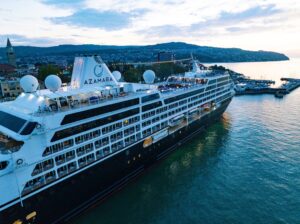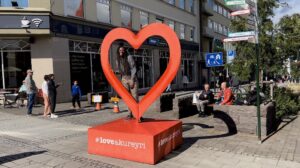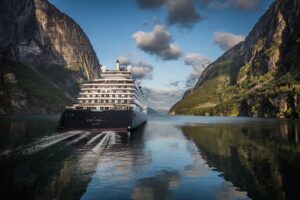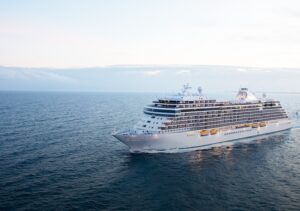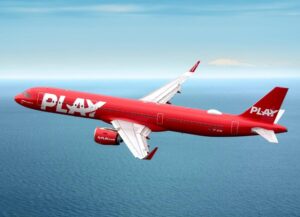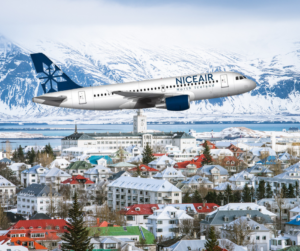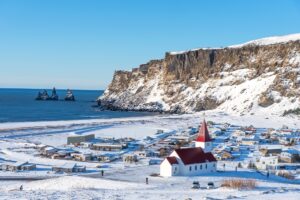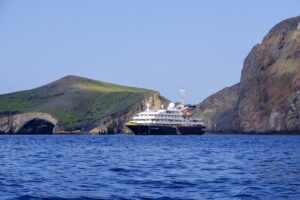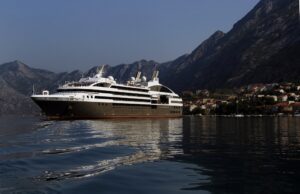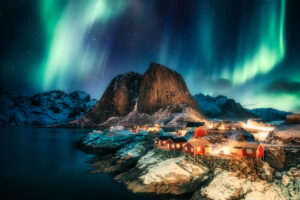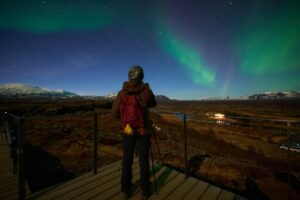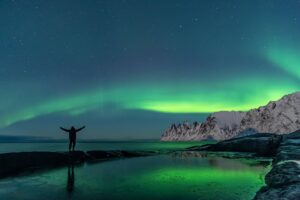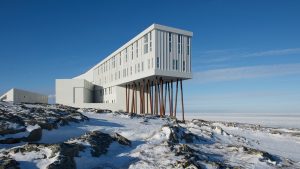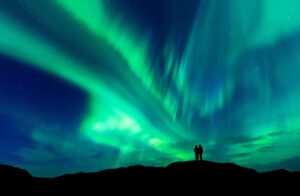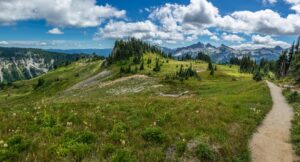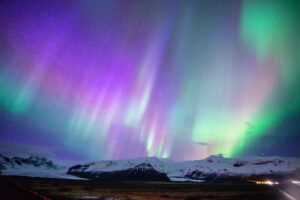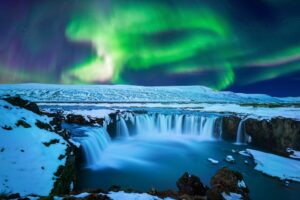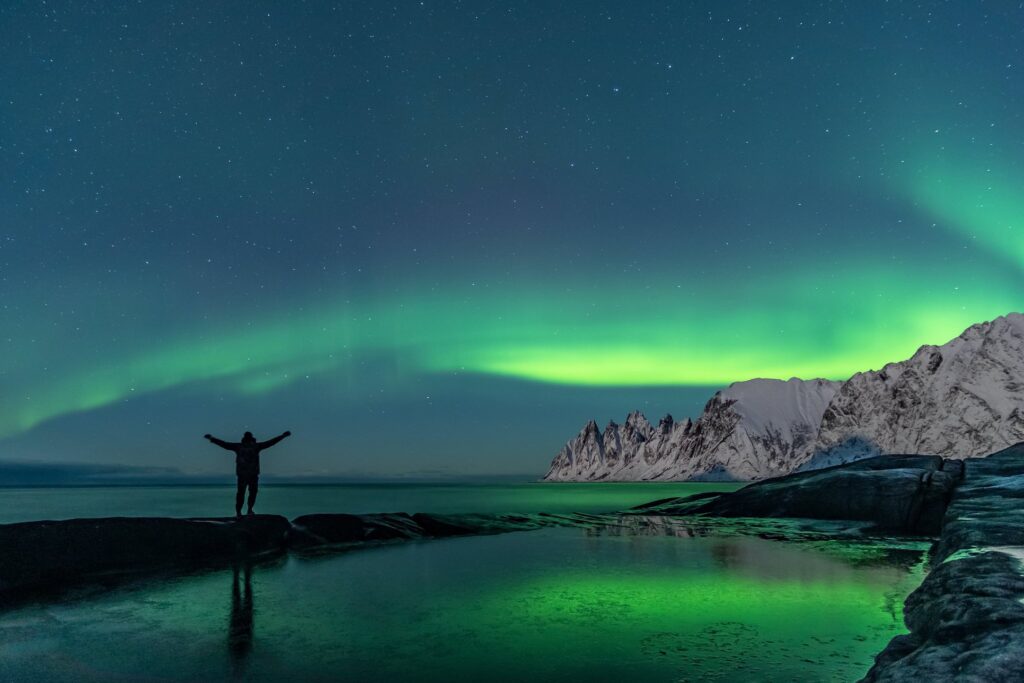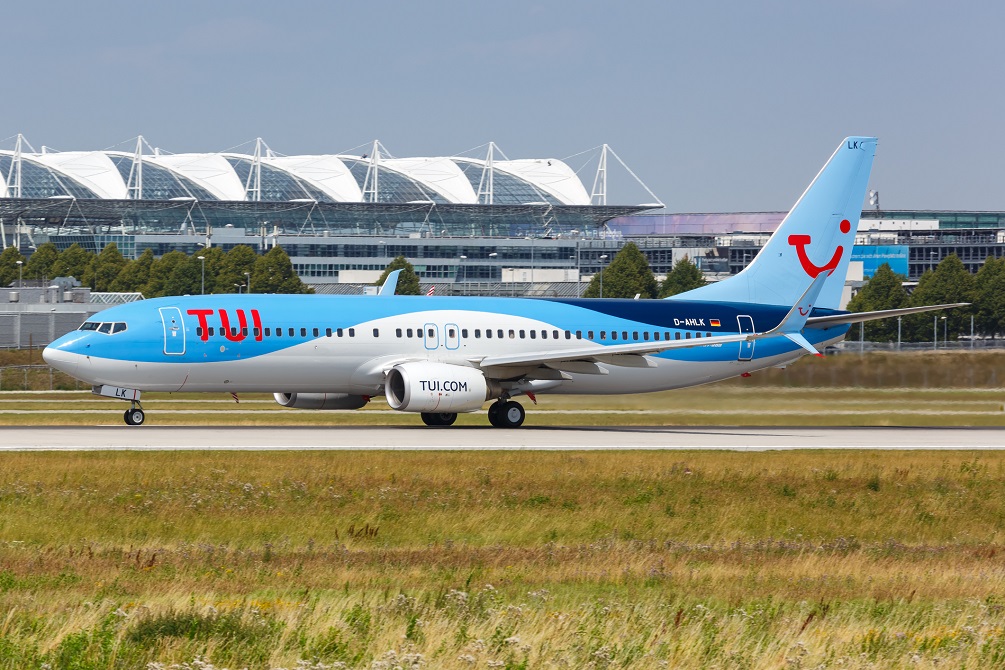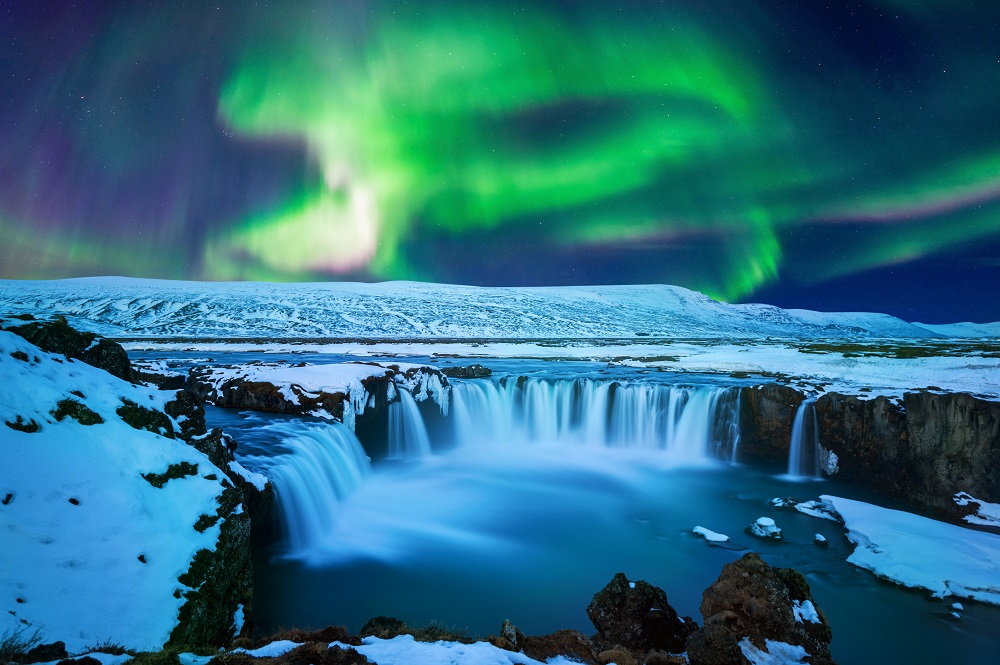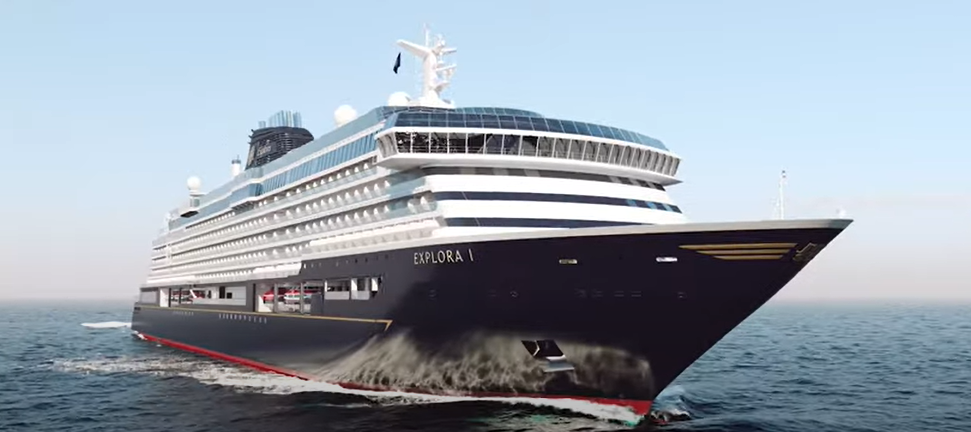Iceland
With secluded plains, volcanic hills, steaming geysers, and dusky beaches, Iceland is as wacky and wonderful as it gets.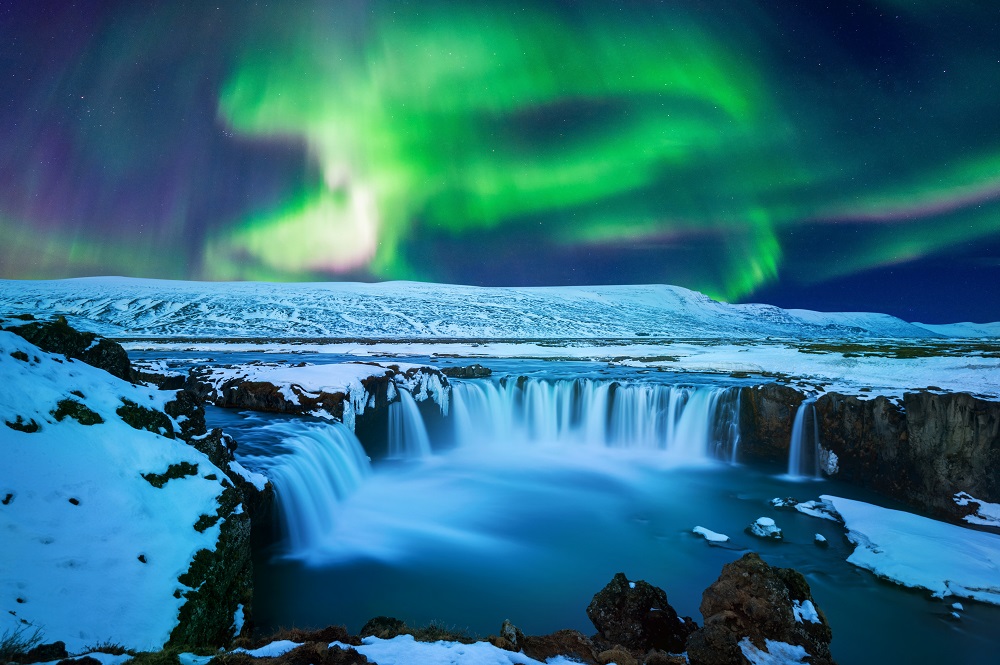
The true beauty of Icelandic nature is to turn the mundane into magical. Soak in a thermal pool, stroll through shimmering glaciers and spend a night camping under the midnight sun. Iceland is as immersive as it is transformative. You’ll come across some of the most prolific writers, musicians, and artists here, inspired by their stunning surroundings.
Nature is at its finest here. So if you’re looking for places to visit in Iceland, begin at Reykjavik, where you can indulge in some whale spotting, bird watching, and island visits.
Another must-see attraction is the Blue Lagoon, in Grindavik. This natural geothermal spa is a major attraction, where you can bathe in blue water shaded by a power station. The hot springs work wonders for skin and health and you’ll find stores and spas selling skin products around this area.
Another famous landmark is the Strokkur Geysir, which is one of the stops along the Golden Circle circuit. And of course, no trip is complete without a glimpse of the famed Northern Lights or Aurora Borealis.
For spectacular views, rugged terrain, lava fields, and the Hekla volcano visit the Landmannalaugar National Park, a popular tourist attraction in Iceland.
Other must-visit destinations in Iceland are the Maelifell Volcano & Myrdalsjökull Glacier Park, the Skaftafell Ice Cave, the Dettifoss Waterfall, and the Kirkjufell Mountain.
A land obsessed with horses and filled with the sights and sounds of nature, Iceland spits fire and ice in equal measure.
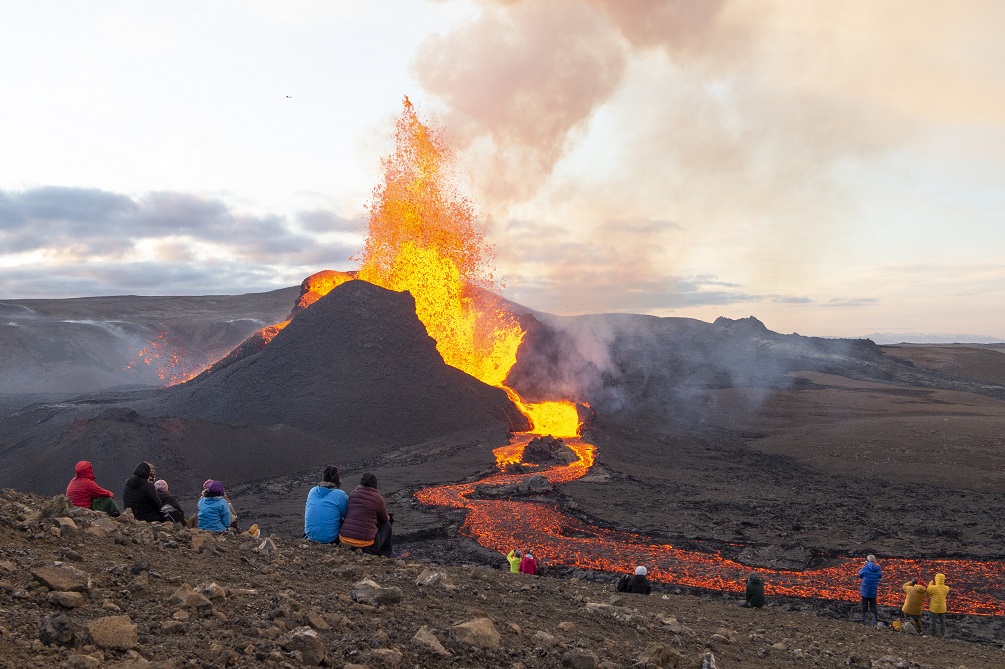


Located in the Atlantic Ocean, Iceland is an island that is situated in close proximity to the Arctic Circle and is sandwiched between Norway and Greenland.
It is the second biggest island after the UK, which stretches over an area of around 40000 square miles. The island was formed fairly recently due to a major volcanic fissure and is still growing at a pace of around 5 cms. every year.
The most active volcanoes in the world are found in Iceland and more than 10% of the country is filled with glaciers. Its landmass mainly consists of glaciers, lava, sand, water, fjords, and plains. More than 80% of the country is uninhabited. It’s noteworthy that it is rare to find trees in Iceland and they are mostly absent.
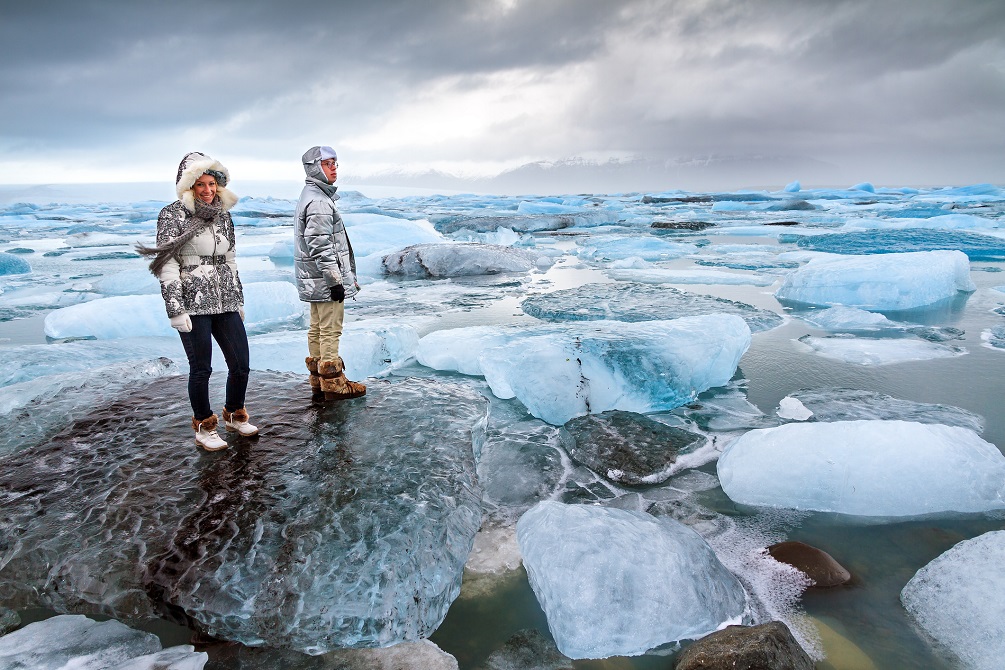


The weather in Iceland is coastal and mild, with summer temperatures running from 10.6C in summer to around 0C in winter. However, the weather is erratic and subject to constant change.
While it is a naturally cold country on account of its high latitude, it also receives ocean winds from the Gulf Stream. It is chilly, overcast, and breezy for most of the year and sunny times are rare. The Southern area is warmer while the Northern coastal area is cooler.
It rains and snows more in the Southern area than in the Northern area. Summer runs from June until August and winter are from October to April. May and September have characteristics of both seasons. However, the climate is so unpredictable and changes so quickly that you can sometimes have both Summer and Winter, all in the space of one day.
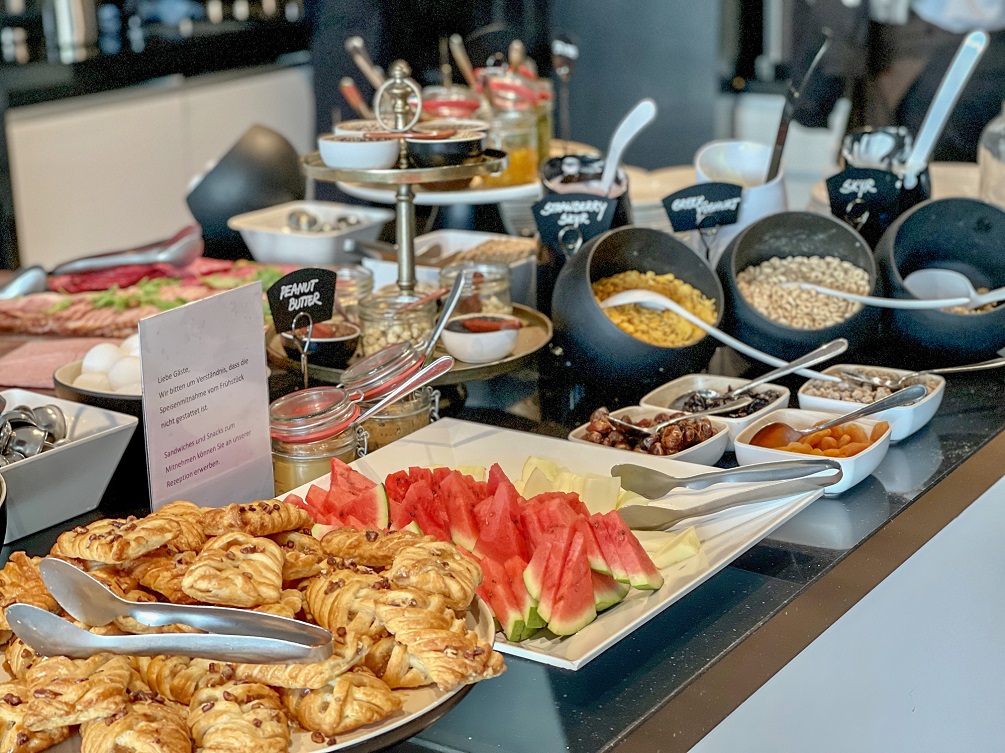


Iceland is a feast for both the eyes and the tastebuds. From fresh flavours and age-old recipes to pure ingredients and traditional preparations, every meal is a treat.
The main ingredient in Iceland is Lamb and the country boasts some of the best lamb meat in the world. Lamb is used in stews, roasts and soups and you must sop down some Kjötsúpa. It is a traditional soup simmered with turnips, carrots, onions and turnips.
To feel like a true blue Icelander, savour some Skyr, the authentic Icelandic yoghurt. It has been part of Icelandic cuisine for over a millennia and is created from skimmed milk.
Another must-try is the Pylsur, which is an Icelandic hot dog. A hot dog is typically made from pork, lamb or beef and accompanied with scrumptious toppings like ketchup, onions and mustard.
Another much-loved Icelandic meal is Harðfiskur, which is hard dried fish. Fish like cod or haddock is dried to get rid of its bacteria and it is then consumed as you would eat crisps like chips or popcorn.
Want to sample some staples? Try the Rúgbrauð, or rye bread which is dark brown in colour and sweet to taste. And of course, seafood is a much-loved staple and has been around from the time there were settlers in Iceland. Cod, salmon and haddock are commonly cooked and consumed, while stews made with seafood are served all over.
Ice cream is happily slurped up all over Iceland all through the year. Savour all the flavours, from the classic to the experimental.
With so many Nordic flavours and dishes to choose from, you’ll undoubtedly be eating and feasting like a Viking.
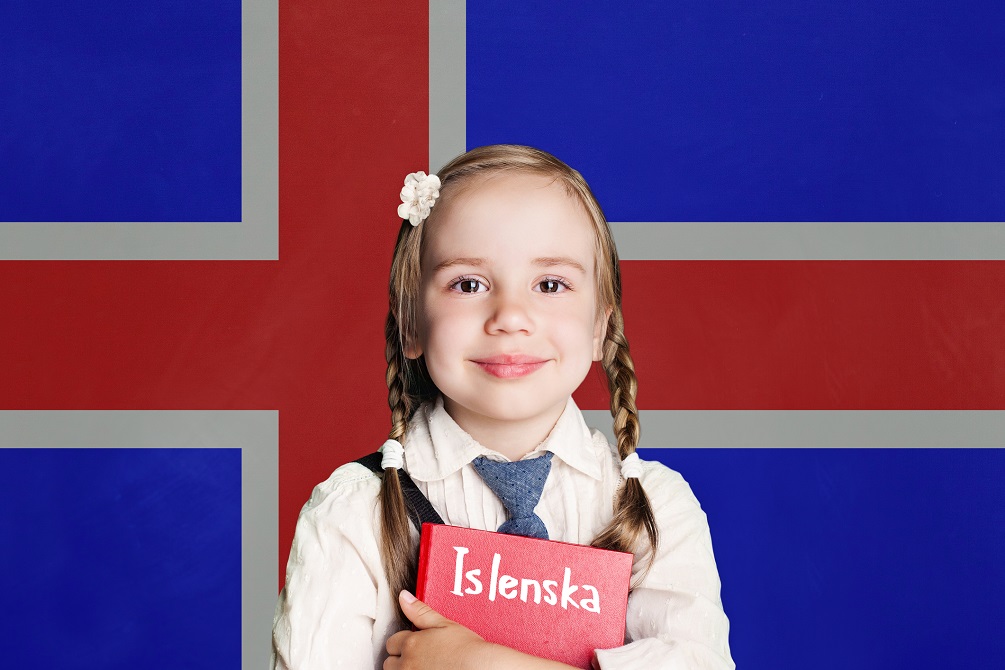


All of Iceland is monolingual and Icelandic is spoken by all the inhabitants. They may speak several languages apart from Icelandic but Icelandic is their primary language. It is also the official language of Iceland and spoken by around 300000 out of the 336000 people who inhabit the country.
It is noteworthy that Iceland has 100 percent literacy. There is a minuscule percentage of deaf people in Iceland that speak Icelandic sign language and it is also officially recognized by law.
While most Icelanders speak Icelandic, the majority can also converse fluently in English. Other European languages like Spanish, French, and German are also spoken.
It has been made mandatory for students to learn English and other Scandinavian languages in school.
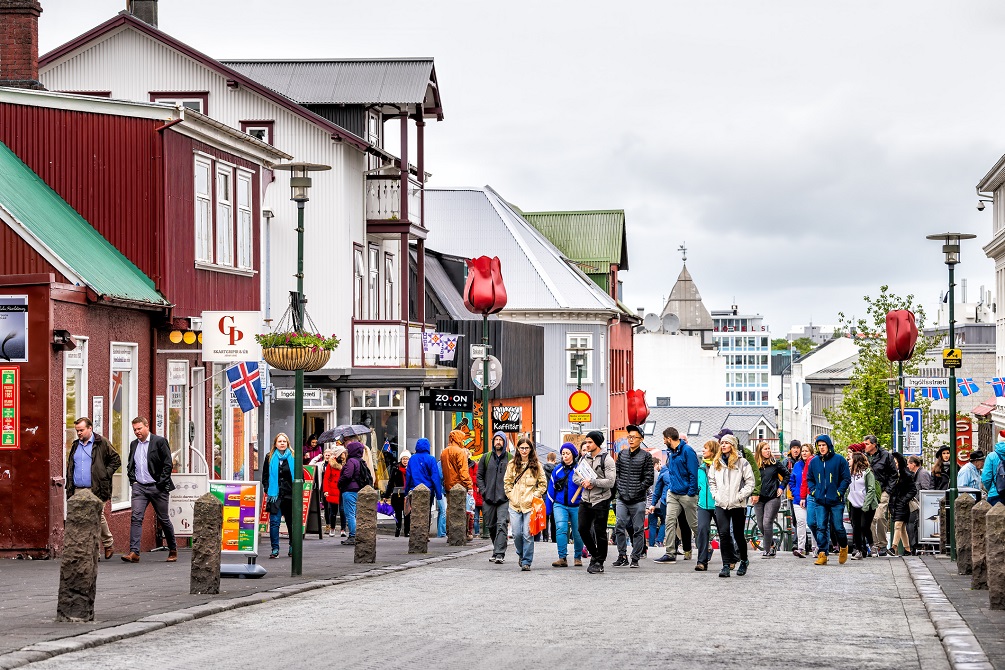


Iceland, being a Nordic country, has a strong connection to the epic Vikings. Icelanders take pride in this legacy and its associated customs and traditions.
Icelanders have long been patrons of literature, arts, and cuisine. You will find art galleries, book stores, and orchestras, especially in the capital of Reykjavik.
Icelandic music has a genre of its own, which combines folk and pop tunes. To get in touch with local culture, you must take in a local musical gig.
A curious thing about Icelanders, which reflects their sense of myth and mystery, is their belief in elves. Many believe that elves and trolls are still present across the land.
They celebrate Husband’s Day and Wife’s Day, called Kóndadagur and Konudagur, respectively, when it is customary to provide your spouse a meal and a gift. Another important day is Thorrablót, which marks the age-old Thorri month.
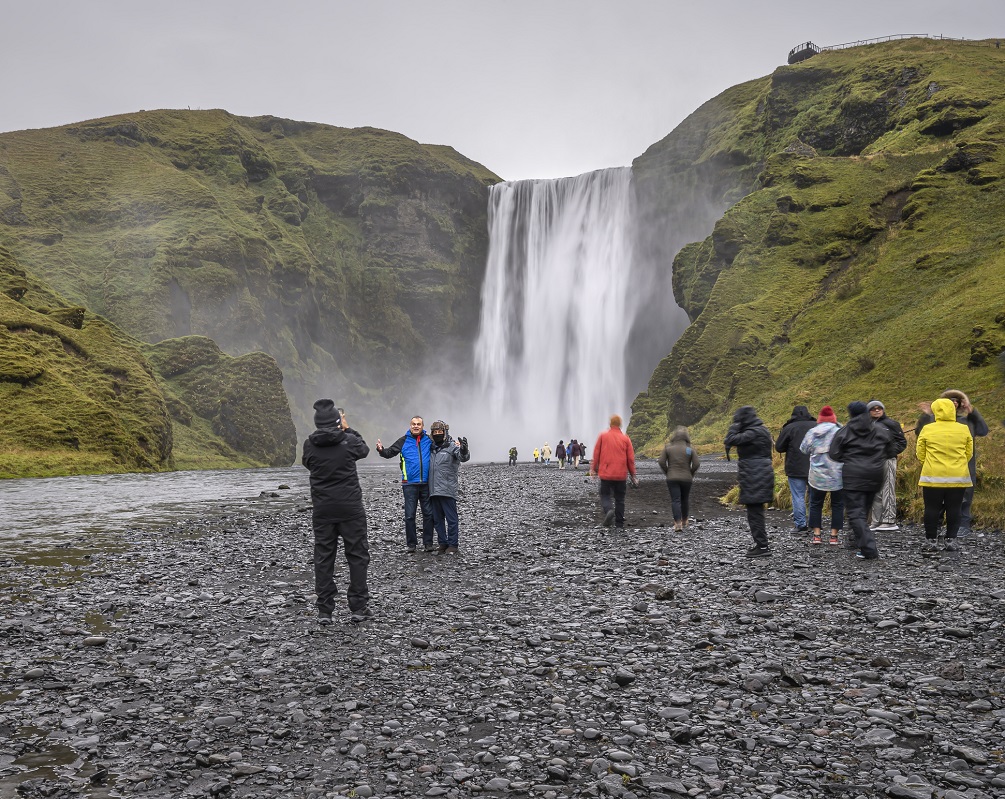


When you travel to Iceland, layering is the key. Since the weather is so unpredictable, you should be prepared for both summer and winter. Woolen clothing, wind and waterproof jackets and trousers are good to carry.
Carry strong walking or hiking shoes, especially if you plan to take walking tours. If you’re traveling in winter, pack along with an overcoat, gloves, scarves, and woolen socks. Waterproof shoes are also good to carry.
Planning to spend plenty of time outdoors? Carry thermal innerwear with a layer of fleece to keep warm. Crampons will give you a bit of confidence especially while treading on icy paths.
Carry some smart casuals that you can wear while out in the city or dining out. Don’t forget to pack a swimsuit, as you don’t want to miss out on swimming in the outdoor geothermal pools.
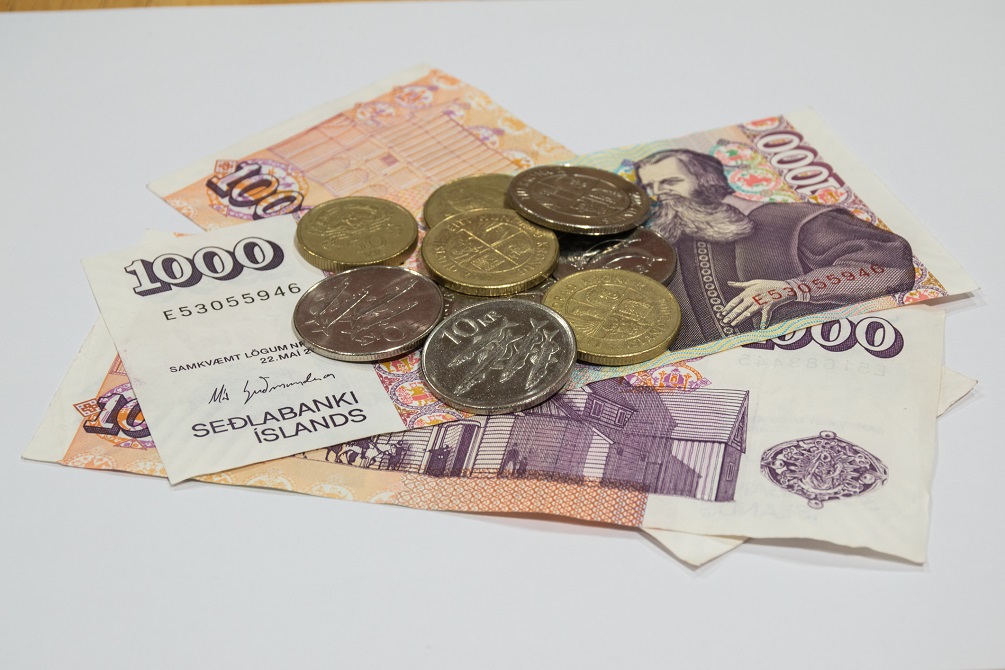


The currency of Iceland is the Icelandic Króna. Its code “ISK” is distinctly recognizable. The “krona” shares similar origins with other Scandinavian currencies like the Swedish krona, the Norwegian krone, and the Danish krone.
The only currency used in Iceland is the Icelandic króna, but most Icelanders widely use debit and credit cards. The use of cash is fairly limited.
At the time of writing this, 1 pound sterling equals 174.51 Icelandic Króna. You will be able to use Euro, Visa, and Mastercard debit and credit cards all over Iceland. If you need some cash, you can easily withdraw some from ATMs in bigger towns and airports.
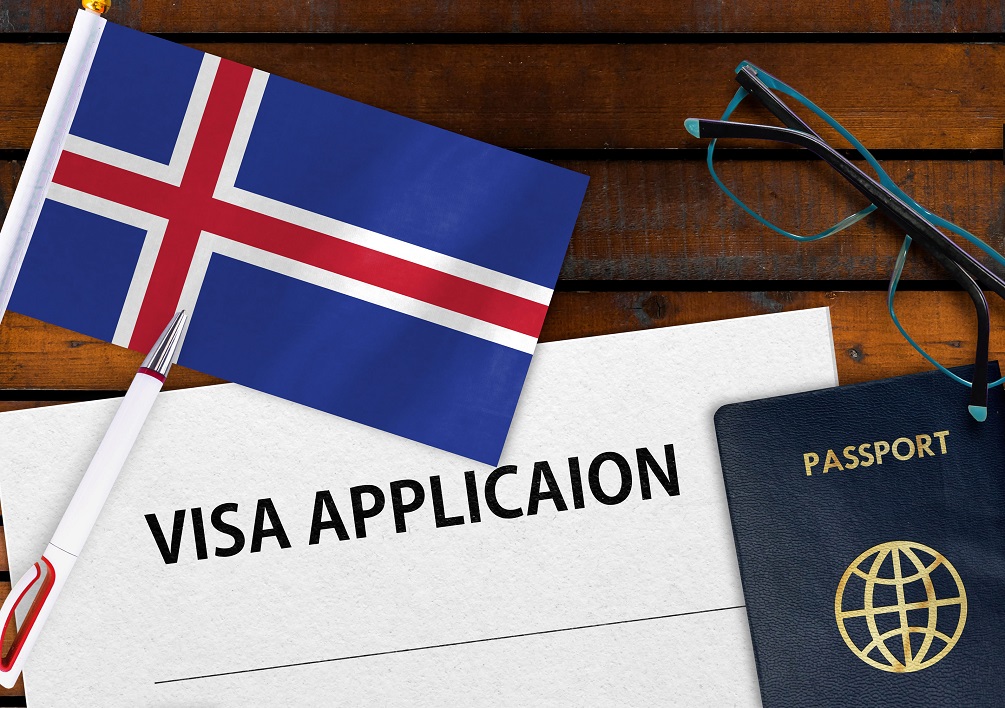


British National passport holders do not require a visa to travel to Iceland. However, your passport should have a validity of a minimum of three months from the date you depart from Iceland.
However, if you are a non-EU national who resides in the UK, you will be required to obtain a Schengen visa to travel to Iceland.
You will be required to apply for a visa if you are not a citizen of a Nordic country, an EU/EAA country, or not a family member of an EU/EEA national. If you are in the UK, you can apply for a Schengen visa via the Embassy of Denmark.
From an orchestra of the elements and stunning natural wonders to ancient folklore and cinematic vistas, Iceland is wild, wonderful, and magical. Perfect for cycling, horseback riding, and road trips, pack your sense of adventure along when you travel to Iceland.
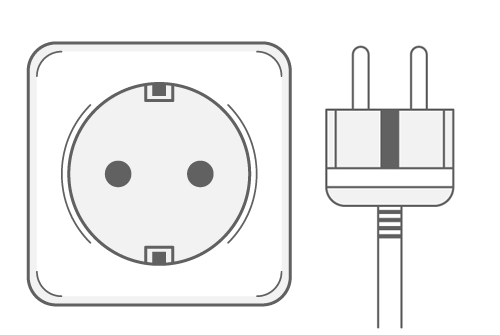


Iceland has a standard frequency of 50Hz and a standard voltage of 230V. The sockets and plugs are of F type, called “Schuko”, which also work with C and E type plugs.
In the UK, the standard voltage is between 220-240V, so you can use your electronics in Iceland.
The best way to make sure is by checking the label on the equipment. If you find ‘INPUT: 100-240V, 50/60 Hz’ mentioned on the label, then the electronic can be utilized in all countries. Mostly, chargers of mobile phones, laptops, cameras, and toothbrushes are universally usable without problems.



The true beauty of Icelandic nature is to turn the mundane into magical. Soak in a thermal pool, stroll through shimmering glaciers and spend a night camping under the midnight sun. Iceland is as immersive as it is transformative. You’ll come across some of the most prolific writers, musicians, and artists here, inspired by their stunning surroundings.
Nature is at its finest here. So if you’re looking for places to visit in Iceland, begin at Reykjavik, where you can indulge in some whale spotting, bird watching, and island visits.
Another must-see attraction is the Blue Lagoon, in Grindavik. This natural geothermal spa is a major attraction, where you can bathe in blue water shaded by a power station. The hot springs work wonders for skin and health and you’ll find stores and spas selling skin products around this area.
Another famous landmark is the Strokkur Geysir, which is one of the stops along the Golden Circle circuit. And of course, no trip is complete without a glimpse of the famed Northern Lights or Aurora Borealis.
For spectacular views, rugged terrain, lava fields, and the Hekla volcano visit the Landmannalaugar National Park, a popular tourist attraction in Iceland.
Other must-visit destinations in Iceland are the Maelifell Volcano & Myrdalsjökull Glacier Park, the Skaftafell Ice Cave, the Dettifoss Waterfall, and the Kirkjufell Mountain.
A land obsessed with horses and filled with the sights and sounds of nature, Iceland spits fire and ice in equal measure.



Located in the Atlantic Ocean, Iceland is an island that is situated in close proximity to the Arctic Circle and is sandwiched between Norway and Greenland.
It is the second biggest island after the UK, which stretches over an area of around 40000 square miles. The island was formed fairly recently due to a major volcanic fissure and is still growing at a pace of around 5 cms. every year.
The most active volcanoes in the world are found in Iceland and more than 10% of the country is filled with glaciers. Its landmass mainly consists of glaciers, lava, sand, water, fjords, and plains. More than 80% of the country is uninhabited. It’s noteworthy that it is rare to find trees in Iceland and they are mostly absent.



The weather in Iceland is coastal and mild, with summer temperatures running from 10.6C in summer to around 0C in winter. However, the weather is erratic and subject to constant change.
While it is a naturally cold country on account of its high latitude, it also receives ocean winds from the Gulf Stream. It is chilly, overcast, and breezy for most of the year and sunny times are rare. The Southern area is warmer while the Northern coastal area is cooler.
It rains and snows more in the Southern area than in the Northern area. Summer runs from June until August and winter are from October to April. May and September have characteristics of both seasons. However, the climate is so unpredictable and changes so quickly that you can sometimes have both Summer and Winter, all in the space of one day.



Iceland is a feast for both the eyes and the tastebuds. From fresh flavours and age-old recipes to pure ingredients and traditional preparations, every meal is a treat.
The main ingredient in Iceland is Lamb and the country boasts some of the best lamb meat in the world. Lamb is used in stews, roasts and soups and you must sop down some Kjötsúpa. It is a traditional soup simmered with turnips, carrots, onions and turnips.
To feel like a true blue Icelander, savour some Skyr, the authentic Icelandic yoghurt. It has been part of Icelandic cuisine for over a millennia and is created from skimmed milk.
Another must-try is the Pylsur, which is an Icelandic hot dog. A hot dog is typically made from pork, lamb or beef and accompanied with scrumptious toppings like ketchup, onions and mustard.
Another much-loved Icelandic meal is Harðfiskur, which is hard dried fish. Fish like cod or haddock is dried to get rid of its bacteria and it is then consumed as you would eat crisps like chips or popcorn.
Want to sample some staples? Try the Rúgbrauð, or rye bread which is dark brown in colour and sweet to taste. And of course, seafood is a much-loved staple and has been around from the time there were settlers in Iceland. Cod, salmon and haddock are commonly cooked and consumed, while stews made with seafood are served all over.
Ice cream is happily slurped up all over Iceland all through the year. Savour all the flavours, from the classic to the experimental.
With so many Nordic flavours and dishes to choose from, you’ll undoubtedly be eating and feasting like a Viking.



All of Iceland is monolingual and Icelandic is spoken by all the inhabitants. They may speak several languages apart from Icelandic but Icelandic is their primary language. It is also the official language of Iceland and spoken by around 300000 out of the 336000 people who inhabit the country.
It is noteworthy that Iceland has 100 percent literacy. There is a minuscule percentage of deaf people in Iceland that speak Icelandic sign language and it is also officially recognized by law.
While most Icelanders speak Icelandic, the majority can also converse fluently in English. Other European languages like Spanish, French, and German are also spoken.
It has been made mandatory for students to learn English and other Scandinavian languages in school.



Iceland, being a Nordic country, has a strong connection to the epic Vikings. Icelanders take pride in this legacy and its associated customs and traditions.
Icelanders have long been patrons of literature, arts, and cuisine. You will find art galleries, book stores, and orchestras, especially in the capital of Reykjavik.
Icelandic music has a genre of its own, which combines folk and pop tunes. To get in touch with local culture, you must take in a local musical gig.
A curious thing about Icelanders, which reflects their sense of myth and mystery, is their belief in elves. Many believe that elves and trolls are still present across the land.
They celebrate Husband’s Day and Wife’s Day, called Kóndadagur and Konudagur, respectively, when it is customary to provide your spouse a meal and a gift. Another important day is Thorrablót, which marks the age-old Thorri month.



When you travel to Iceland, layering is the key. Since the weather is so unpredictable, you should be prepared for both summer and winter. Woolen clothing, wind and waterproof jackets and trousers are good to carry.
Carry strong walking or hiking shoes, especially if you plan to take walking tours. If you’re traveling in winter, pack along with an overcoat, gloves, scarves, and woolen socks. Waterproof shoes are also good to carry.
Planning to spend plenty of time outdoors? Carry thermal innerwear with a layer of fleece to keep warm. Crampons will give you a bit of confidence especially while treading on icy paths.
Carry some smart casuals that you can wear while out in the city or dining out. Don’t forget to pack a swimsuit, as you don’t want to miss out on swimming in the outdoor geothermal pools.



The currency of Iceland is the Icelandic Króna. Its code “ISK” is distinctly recognizable. The “krona” shares similar origins with other Scandinavian currencies like the Swedish krona, the Norwegian krone, and the Danish krone.
The only currency used in Iceland is the Icelandic króna, but most Icelanders widely use debit and credit cards. The use of cash is fairly limited.
At the time of writing this, 1 pound sterling equals 174.51 Icelandic Króna. You will be able to use Euro, Visa, and Mastercard debit and credit cards all over Iceland. If you need some cash, you can easily withdraw some from ATMs in bigger towns and airports.



British National passport holders do not require a visa to travel to Iceland. However, your passport should have a validity of a minimum of three months from the date you depart from Iceland.
However, if you are a non-EU national who resides in the UK, you will be required to obtain a Schengen visa to travel to Iceland.
You will be required to apply for a visa if you are not a citizen of a Nordic country, an EU/EAA country, or not a family member of an EU/EEA national. If you are in the UK, you can apply for a Schengen visa via the Embassy of Denmark.
From an orchestra of the elements and stunning natural wonders to ancient folklore and cinematic vistas, Iceland is wild, wonderful, and magical. Perfect for cycling, horseback riding, and road trips, pack your sense of adventure along when you travel to Iceland.



Iceland has a standard frequency of 50Hz and a standard voltage of 230V. The sockets and plugs are of F type, called “Schuko”, which also work with C and E type plugs.
In the UK, the standard voltage is between 220-240V, so you can use your electronics in Iceland.
The best way to make sure is by checking the label on the equipment. If you find ‘INPUT: 100-240V, 50/60 Hz’ mentioned on the label, then the electronic can be utilized in all countries. Mostly, chargers of mobile phones, laptops, cameras, and toothbrushes are universally usable without problems.
Travel related news, information and inspirational articles and videos for travellers booking flights or holidays to Iceland. Ask questions about travel in Iceland and get answers from Iceland experts
NEWS
Inspiration, Information and Travel Guides
MEET THE Iceland EXPERTS
If you are looking to book a holiday to Iceland or needs some help and advice planning travel to Iceland then contact one of the UK based independent travel agents that specialise in Iceland itineraries.
FEATURED VIDEOS
Your Travel Questions Answered
Ask any travel related question and get an answer from one of our experts that will provide you with an answer from their personal experience
There is no question for this category.

